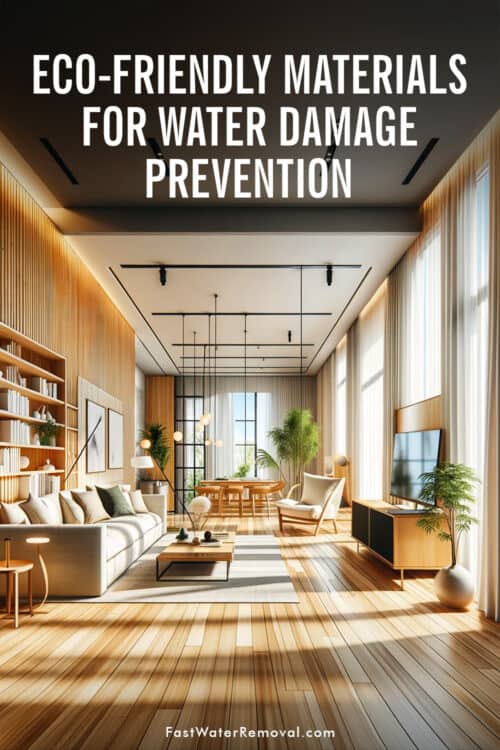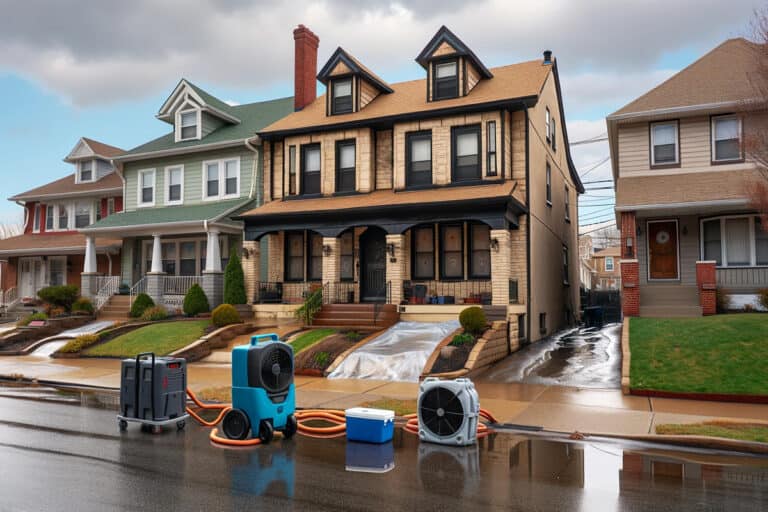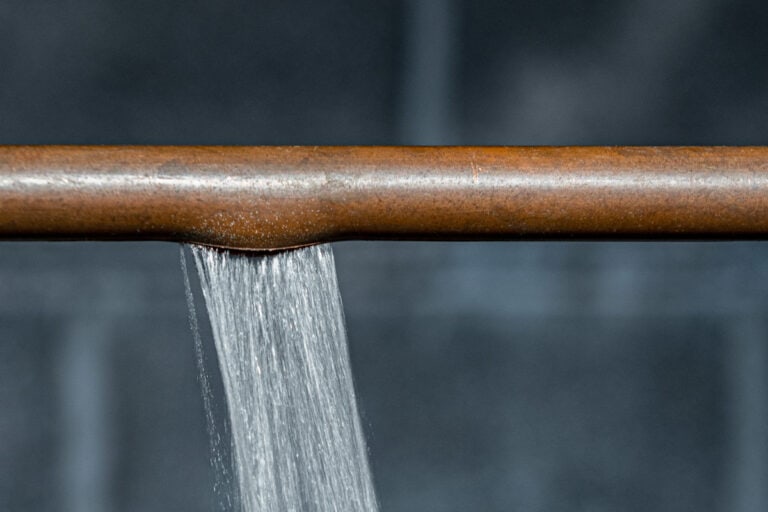Disclosure: I am compensated for purchases made through some links on this site. Click for details.
In today’s eco-conscious world, integrating sustainable living practices, particularly through the use of eco-friendly materials, is crucial for water damage prevention in our homes. This approach not only safeguards our living spaces from the detrimental effects of water damage but also significantly reduces our environmental impact. By choosing materials that are durable, sustainable, and environmentally friendly, we can prevent water damage while contributing to the health of our planet.
The transition to eco-friendly materials—ranging from bamboo flooring to recycled rubber roofing—offers a practical solution to water damage prevention, aligning with sustainable living ideals without compromising on quality or aesthetics. Additionally, adopting sustainable solutions for water damage recovery can further our environmental goals, utilizing methods that minimize waste and promote the reuse and recycling of materials.
This article aims to provide a comprehensive guide on how to protect and recover your home from water damage using sustainable practices. By focusing on both prevention and recovery, we’ll explore effective, eco-friendly strategies that not only benefit the environment but also offer long-term savings and enhance property value. Join us in exploring sustainable approaches to water damage prevention and recovery, making informed choices that support both your home and the earth.
Understanding Water Damage and Its Environmental Impact
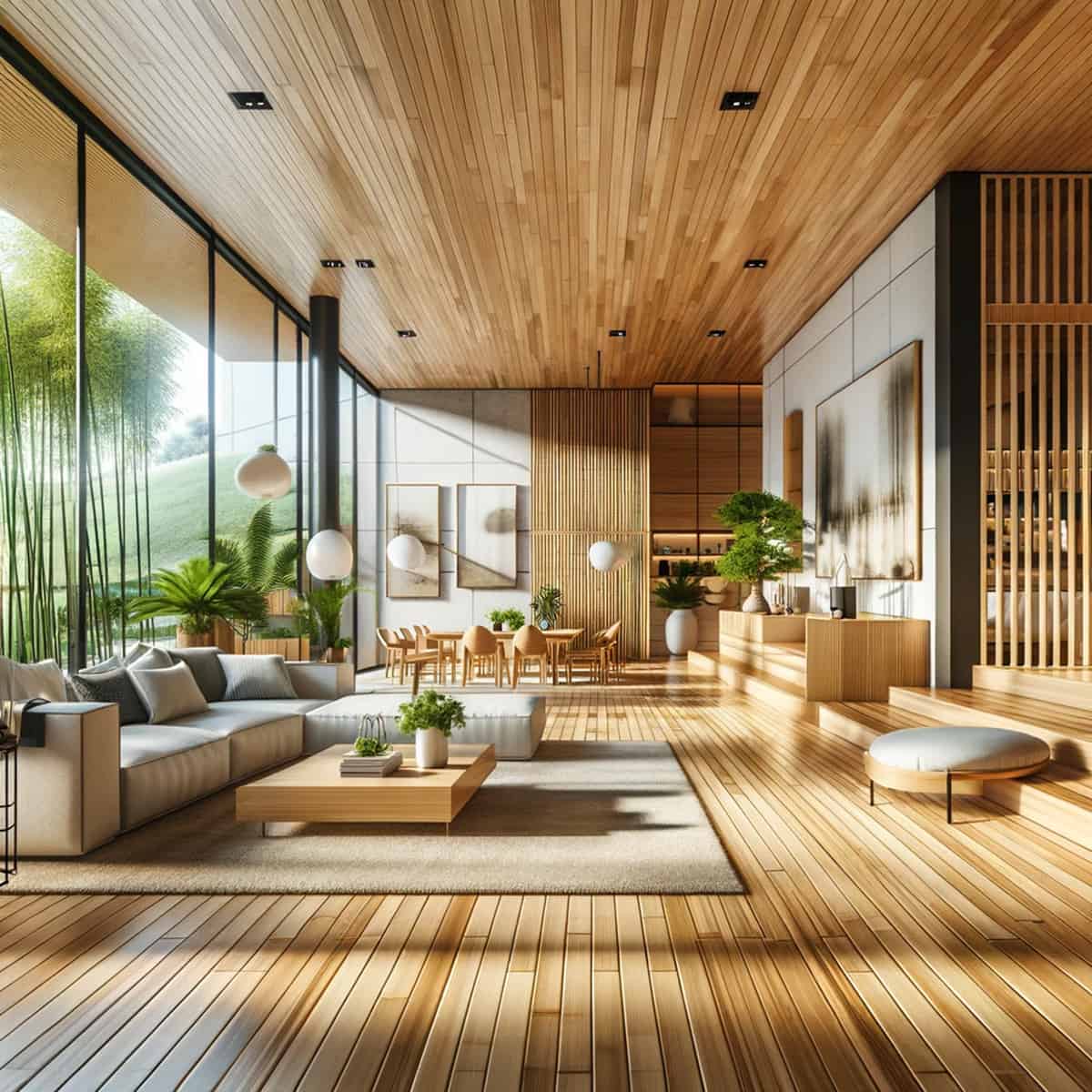
Water damage in homes can arise from various sources—roof leaks, plumbing leaks, basement concerns, flooding, and even humidity—leading to structural damage, mold growth, and a host of other issues. Traditionally, addressing water damage has often involved materials and methods that, while effective, can have a significant environmental footprint. For instance, the production and disposal of certain water-resistant materials contribute to pollution and resource depletion. Recognizing the environmental impact of these conventional approaches is the first step towards adopting more sustainable practices.
The Environmental Toll of Conventional Water Damage Prevention
- Resource Intensive: Many traditional building materials, like certain plastics and synthetic rubber, are derived from non-renewable resources. Their production is energy-intensive and generates considerable pollution.
- Waste Generation: The aftermath of water damage often results in significant waste, from damaged furnishings to the materials stripped out during restoration, much of which ends up in landfills.
- Chemical Use: Some water-proofing methods rely on chemicals that can be harmful to the environment, contributing to water and soil pollution when they leach out or are improperly disposed of.
The Case for Eco-Friendly Materials
Transitioning to eco-friendly materials addresses these issues head-on:
- Sustainable Production: Eco-friendly materials are typically made from renewable resources, with production processes designed to minimize environmental impact.
- Reduced Waste: Sustainable building practices emphasize durability and adaptability, reducing the likelihood of future water damage and the waste associated with repairs and restoration.
- Non-Toxic: Natural and green materials often forego the harsh chemicals found in traditional waterproofing solutions, offering safer alternatives for both the environment and human health.
Eco-Friendly Materials in Action
Implementing eco-friendly materials in water damage prevention and recovery not only mitigates the environmental impact but also aligns with a broader commitment to sustainability. By choosing materials and methods that prioritize the health of the planet, homeowners can contribute to a more sustainable future while protecting their homes from the ravages of water damage.
In summary, understanding the environmental impact of conventional water damage prevention methods highlights the importance of adopting eco-friendly materials. These sustainable alternatives offer a practical solution to reduce our ecological footprint while ensuring our homes remain safe and dry. As we delve deeper into the benefits and applications of these materials, it becomes clear that sustainable living and effective water damage prevention go hand in hand.
Eco-Friendly Materials for Water Damage Prevention

The shift towards sustainable living has brought about innovative eco-friendly materials that offer effective water damage prevention without compromising the environment. Here, we explore a selection of these materials, highlighting their benefits and applications in safeguarding homes against water intrusion.
Bamboo Flooring
- Sustainability: Bamboo is a highly renewable resource, growing to maturity in just 3 to 5 years, compared to hardwoods that can take decades.
- Durability: Naturally water-resistant, bamboo flooring withstands spills and humidity better than traditional hardwood floors, making it an ideal choice for areas prone to moisture.
Recycled Rubber Roofing
- Longevity: Rubber roofing made from recycled tires is incredibly durable and can last up to 50 years, offering excellent protection against water damage.
- Eco-Friendly: Utilizing recycled materials reduces landfill waste and the demand for new raw resources, embodying the principles of sustainable living.
Cork Insulation
- Natural Resistance: Cork is naturally mold and mildew-resistant, making it an excellent insulation material that helps prevent water damage and improves indoor air quality.
- Renewable Resource: Harvested from the bark of cork oak trees without harming the tree, cork is a sustainable choice that regenerates over time.

Low-VOC Sealants and Paints
- Health and Environmental Benefits: Low-VOC (volatile organic compounds) products minimize exposure to harmful chemicals, improving indoor air quality and reducing environmental pollution.
- Water Resistance: These sealants and paints provide a protective barrier against moisture, preventing water damage to walls and surfaces.
Benefits of Eco-Friendly Materials
- Reduced Environmental Impact: By choosing materials that are renewable, recyclable, and less polluting, homeowners can significantly reduce their carbon footprint.
- Enhanced Durability and Efficiency: Many eco-friendly materials offer superior durability and natural resistance to water, potentially reducing the frequency and cost of repairs.
- Healthier Living Spaces: Materials free from harmful chemicals contribute to a healthier indoor environment, benefiting the well-being of occupants.
Implementing Eco-Friendly Materials
Incorporating these eco-friendly materials into home construction and renovation projects requires thoughtful planning and design. Homeowners should consult with sustainable building professionals to identify the best materials for their specific needs and climate. Additionally, considering the lifecycle and recyclability of materials can further enhance the sustainability of water damage prevention efforts.
By integrating bamboo flooring, recycled rubber roofing, cork insulation, and low-VOC sealants and paints, homeowners can take significant strides toward creating more sustainable and resilient living spaces. These materials not only prevent water damage but also align with a broader commitment to environmental stewardship and sustainable living.
Implementing Sustainable Solutions for Water Damage Recovery
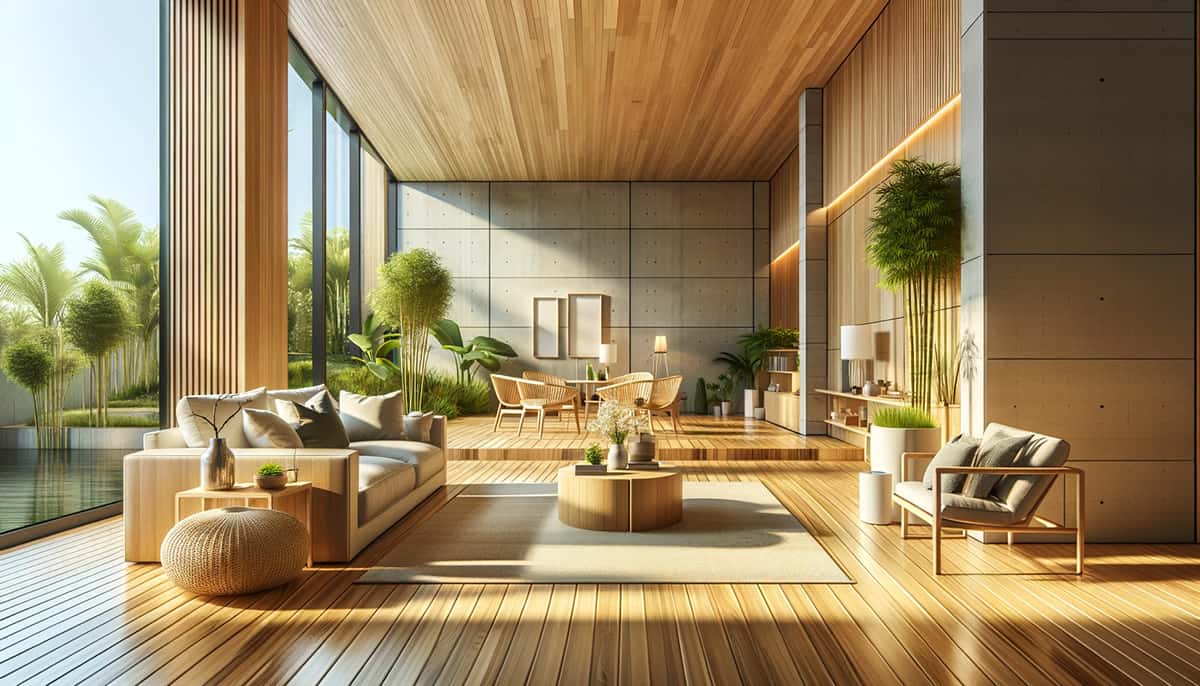
Recovering from water damage offers a pivotal opportunity to implement sustainable solutions that align with eco-friendly principles. This section outlines practical, sustainable strategies for restoration and recovery after water damage, emphasizing the importance of choosing materials and methods that minimize environmental impact while ensuring effective recovery.
Sustainable Debris Management
- Recycling and Reusing: Prioritize separating materials that can be recycled or reused from water-damaged debris. Wood, metal, and certain plastics can often be salvaged and repurposed, reducing landfill waste.
- Eco-Friendly Disposal: For materials that cannot be saved, seek out eco-friendly disposal options. Many communities offer green waste programs that ensure responsible handling of construction debris.
Green Reconstruction Materials
- Recycled Content: Choose reconstruction materials that contain recycled content. Drywall, insulation, and even certain types of flooring can be sourced from recycled materials, lessening the demand on virgin resources.
- Sustainable Sourcing: Opt for materials harvested or produced in an environmentally responsible manner. FSC-certified wood, for example, comes from forests that are managed sustainably, supporting biodiversity and reducing carbon footprint.
Energy-Efficient Upgrades
- Insulation and Sealing: Water damage repair is an ideal time to improve a home’s energy efficiency. Upgrading insulation and sealing leaks can significantly reduce energy consumption and protect against future water intrusion.
- High-Efficiency Appliances: If appliances need replacement, choose ENERGY STAR-certified models. These not only use less energy but are often designed to be more resistant to water damage.

Use of Natural and Non-Toxic Materials
- Mold Remediation: In the wake of water damage, mold prevention is crucial. Opt for natural, non-toxic fungicides for mold remediation, ensuring a safer environment for both the occupants and the ecosystem.
- Finishes and Paints: Select low-VOC paints and finishes for restoration work. These products reduce exposure to harmful chemicals and contribute to healthier indoor air quality.
Benefits of Sustainable Water Damage Recovery
- Environmental Protection: By choosing sustainable recovery methods, homeowners can mitigate the environmental impact of their restoration efforts, promoting a healthier planet.
- Cost Savings: Many green materials and technologies offer long-term savings through reduced energy costs and lower maintenance requirements.
- Enhanced Property Value: Homes restored with sustainable materials and practices often see an increase in property value, appealing to the growing market of eco-conscious buyers.
Implementing Sustainable Recovery Practices
Implementing these sustainable solutions requires careful planning and a commitment to eco-friendly principles throughout the recovery process. Homeowners should work with contractors who have experience in green building and restoration to ensure that sustainable practices are followed. Moreover, engaging with local environmental resources and communities can provide additional insights and support for sustainable recovery efforts.
To sum up, sustainable solutions for water damage recovery not only address the immediate need for restoration but also contribute to the broader goals of environmental stewardship and sustainable living. By prioritizing green materials, energy efficiency, and responsible debris management, homeowners can effectively recover from water damage while advancing their commitment to a more sustainable and resilient future.
Local and Regional Considerations for Water Damage Prevention

The effectiveness of eco-friendly materials and water damage prevention strategies can significantly depend on local and regional climate conditions. Understanding these nuances is crucial for implementing the most effective measures for your home:
- High Humidity Areas: In regions with high humidity, choosing materials with natural mold and moisture resistance, such as cork or bamboo, can be particularly beneficial.
- Flood-Prone Regions: For homes in areas susceptible to flooding, incorporating elevated designs and using water-resistant barriers and sealants can provide added protection.
- Cold Climates: In colder regions, ensuring proper insulation and using materials that can withstand freeze-thaw cycles are critical to preventing water damage.
Additionally, local building codes and regulations may dictate specific requirements for water damage prevention. Familiarizing yourself with these regulations can help ensure that your eco-friendly improvements are compliant and effective.
The Role of Expertise in Sustainable Water Damage Prevention

Effective water damage prevention and recovery, particularly through sustainable practices, requires not just the right materials but also a deep understanding of both the environmental impact and the technical aspects of implementation. This expertise is pivotal in ensuring that sustainable measures are not only planned but executed in a way that aligns with both environmental goals and the long-term safety and integrity of the building.
Expert Guidance for Effective Implementation
- Certified Professionals: Engaging with professionals who are certified in sustainable building practices ensures that the latest and most effective eco-friendly techniques are employed. These experts bring a wealth of knowledge on materials that are both resilient against water damage and have a low environmental impact.
- Sustainable Building Assessments: Before undertaking any prevention or recovery project, a comprehensive assessment by a sustainability expert can identify the most effective strategies tailored to the specific needs of a property. This includes evaluating the potential for water damage and recommending preventive measures that align with sustainable living principles.
Education and Awareness
- Staying Informed: Homeowners and builders alike benefit from staying informed about the latest in sustainable materials and practices. Workshops, webinars, and publications by authoritative sources in green building can provide valuable insights.
- Community Engagement: Participating in local environmental groups or initiatives can offer access to resources and shared knowledge on sustainable water damage prevention and recovery, fostering a community-wide approach to environmental stewardship.
Verifying the Trustworthiness of Information
- Research and References: When seeking out expertise, look for professionals and companies with a proven track record, backed by research, case studies, and positive customer testimonials.
- Transparency and Education: Trustworthy experts will be transparent about their methods, willing to educate homeowners about the processes involved, and explain the benefits and limitations of various eco-friendly materials and practices.
The Impact of Expertise on Sustainable Practices
The input of knowledgeable professionals can significantly enhance the effectiveness of sustainable water damage prevention and recovery efforts. They not only ensure that the materials and methods used are environmentally friendly but also that they are applied in a manner that provides lasting protection and value. Experts in sustainable building practices can also offer insights into innovations and trends, keeping homeowners at the forefront of eco-friendly solutions.
Sustainability Certifications and Standards

As we’ve explored eco-friendly materials and practices for preventing and recovering from water damage, it’s essential to recognize the role of sustainability certifications and standards. Certifications like LEED, Energy Star, and Green Seal are not just badges of honor; they are markers of quality, sustainability, and commitment to environmental stewardship.
- LEED: Validates that building materials and practices meet comprehensive sustainability criteria, from energy efficiency to resource conservation.
- Energy Star: Certifies appliances and products for superior energy efficiency, helping reduce the environmental footprint of our homes.
- Green Seal: Endorses products that achieve the highest standards of environmental quality and performance.
Seeking out these certifications when planning your water damage prevention and recovery projects can guide you toward making more informed, sustainable choices, ensuring that your efforts contribute positively to the environment and your well-being.
Community and Governmental Support for Sustainable Water Damage Prevention
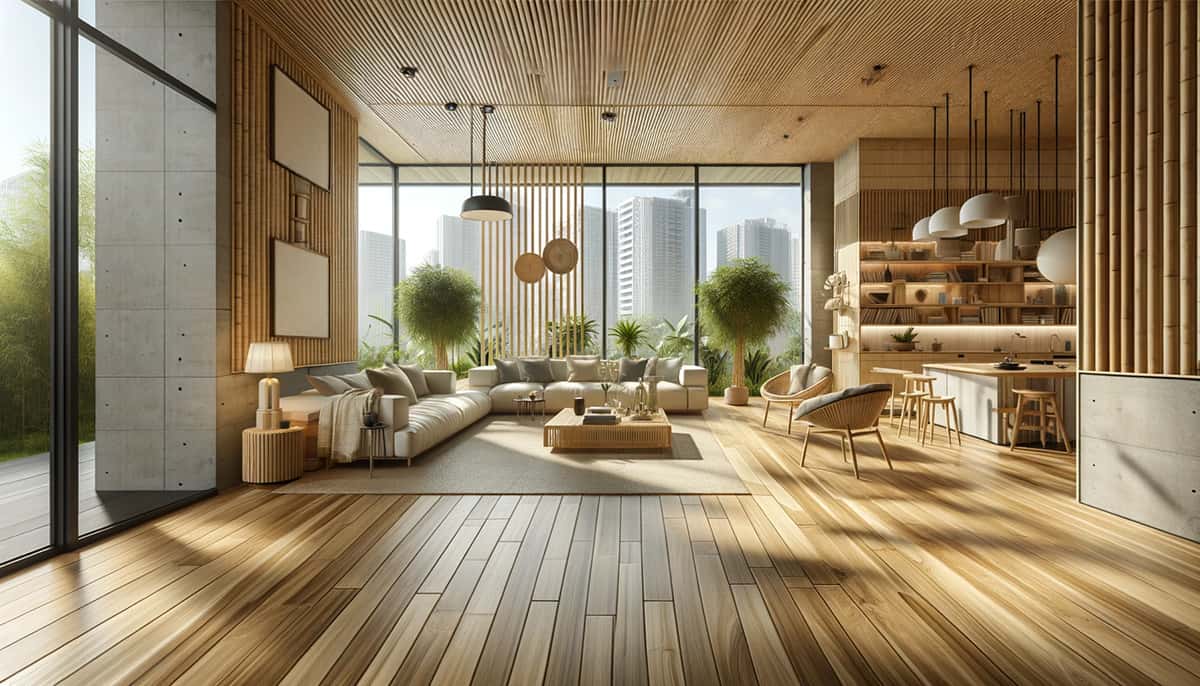
Adopting sustainable practices in water damage prevention and recovery is not only environmentally responsible but can also be economically advantageous, thanks to various community and governmental support mechanisms. These supports can range from financial incentives to resources and programs designed to encourage sustainable building practices.
Financial Incentives and Rebates
- Tax Credits: Some governments offer tax credits for homeowners who incorporate energy-efficient or sustainable materials and technologies in their homes. This can include installations that contribute to water damage prevention, such as green roofs or high-efficiency plumbing fixtures.
- Rebates: Look for rebate programs that provide cash back for the purchase of eco-friendly building materials or appliances. These are often offered by local utility companies or governmental agencies.
- Grants and Subsidies: In certain areas, grants or subsidies may be available for projects that enhance a home’s sustainability, including those aimed at reducing the risk of water damage through sustainable means.
Educational Resources and Programs
- Workshops and Seminars: Many communities and governmental organizations offer workshops, seminars, and online resources aimed at educating homeowners about sustainable building practices and water damage prevention.
- Sustainable Building Programs: Participate in programs that support sustainable building practices. Programs like LEED for Homes provide frameworks and certification for eco-friendly building and renovation projects.
Leveraging Local Support
- Community Initiatives: Engage with local environmental or sustainability initiatives that can provide support, resources, and networking opportunities for implementing sustainable practices in your home.
- Consultation Services: Some local governments offer free or subsidized consultation services to homeowners looking to make their homes more sustainable. These services can include advice on preventing water damage with eco-friendly materials and methods.
How to Access These Supports
- Research: Start with a thorough research phase. Governmental websites, local utility company portals, and sustainability-focused NGOs are good places to start.
- Ask the Experts: When hiring professionals for your home renovation or restoration project, ask them about known incentives or support programs in your area.
- Community Networks: Join local environmental groups or online forums where you can exchange information with fellow homeowners about available support for sustainable building practices.
Community and governmental support can play a significant role in making sustainable water damage prevention more accessible and affordable. By taking advantage of these supports, homeowners can contribute to environmental sustainability while also enjoying the financial and practical benefits of eco-friendly building practices. Engaging with these resources ensures that your efforts to prevent water damage not only protect your home but also align with broader environmental goals, making a positive impact on the community and the planet.
Conclusion

Incorporating expertise in sustainable water damage prevention and recovery transforms good intentions into effective actions.
By leveraging the knowledge and experience of certified professionals, homeowners can navigate the complexities of sustainable building with confidence, ensuring that their efforts to prevent and recover from water damage are both environmentally responsible and structurally sound.
This collaborative approach between homeowners and experts paves the way for more resilient, sustainable living environments, highlighting the critical role of expertise in achieving our environmental and living space goals.
